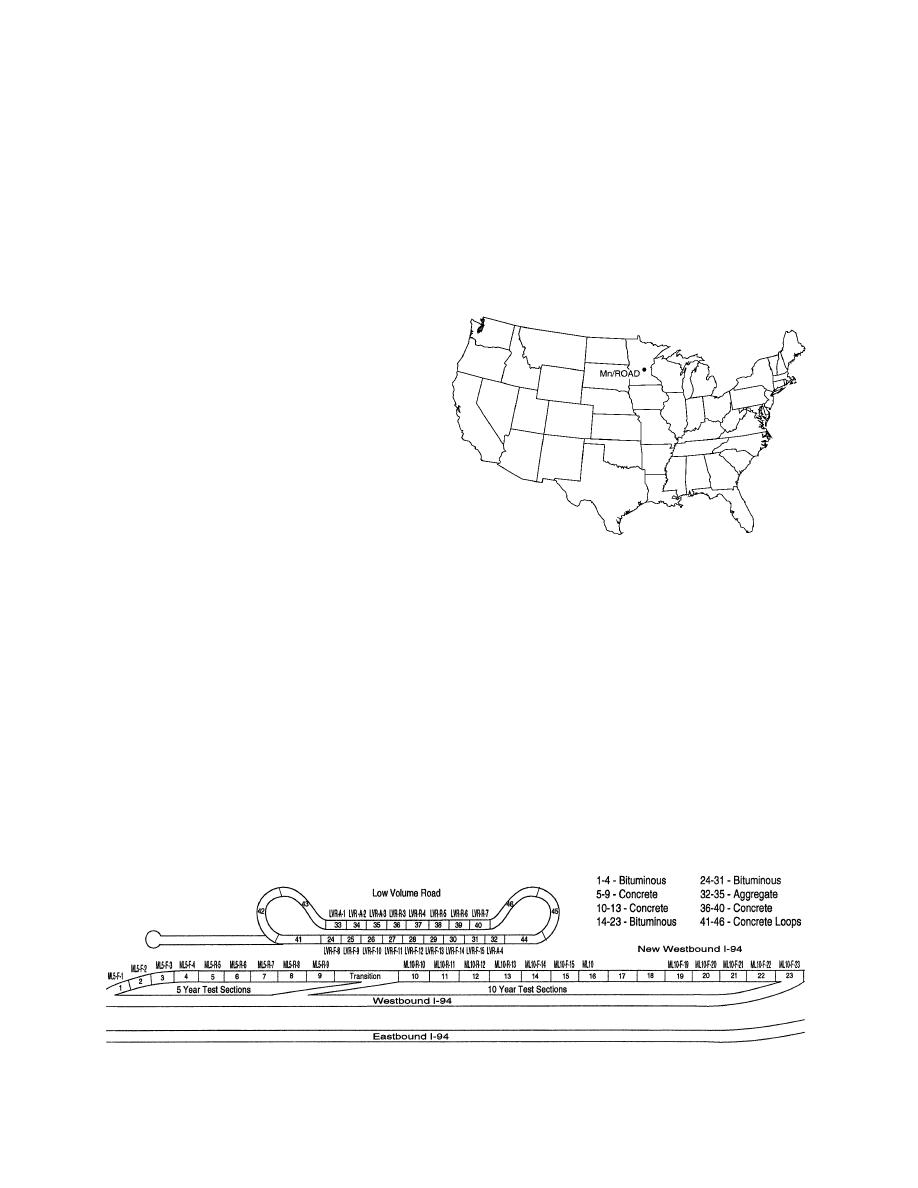
Material Testing and Initial Pavement Design Modeling
Minnesota Road Research Project
SUSAN R. BIGL AND RICHARD L. BERG
INTRODUCTION
Between January 1990 and December 1994,
studies to verify and apply a Corps of Engineer-
developed mechanistic design and evaluation
method for pavements in seasonal frost areas were
conducted as a Construction Productivity Advance-
ment Research (CPAR) project between the Min-
nesota Department of Transportation (Mn/DOT)
and the U.S. Army Cold Regions Research and
Engineering Laboratory (CRREL). The project in-
volved four components:
Figure 1. Location of Mn/ROAD.
1. Laboratory tests on the pavement materials.
2. Predicting performance with the CRREL
Mn/ROAD. Figure 2 illustrates the layout of the
Mechanistic Pavement Design Procedure.
test sections. Only the new westbound I-94 test
3. Construction of the Minnesota Road Research
cells were investigated as part of the CPAR project.
Project (Mn/ROAD).
The mainline section of Mn/ROAD includes a 3-
4. Using performance data from Mn/ROAD to
mile (4.8-km), two-lane roadway over which west-
validate the Mechanistic Pavement Design
bound I-94 traffic is diverted. The project includes
and Evaluation Procedure.
23 test cells, which are composed of fourteen as-
Because construction and trafficking of the Mn/
phalt and nine concrete surfaced sections. Each
ROAD facility was much delayed from the origi-
cell is 153 m (500 ft) long with transitions of
nally planned schedule, the model validation ef-
various lengths separating the individual cells. The
fort was not accomplished.
cells were designed to have a service life of either
Mn/ROAD is located on Interstate 94 near
five or ten years. A midpoint cross-over will allow
Monticello, Minnesota, approximately 40 miles
traffic to continue using the 10-year cells once the
(64.4 km) northwest of the twin cities of Minne-
5-year cells have failed.
apolis/St. Paul. Figure 1 shows the location of
Figure 2. Schematic layout of Mn/ROAD.



 Previous Page
Previous Page
